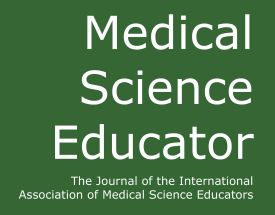
Every month, the IAMSE Publications Committee reviews published articles from the archives of Medical Science Educator or of its predecessor JIAMSE. This month’s review is taken from the article titled, “A Scoping Review of Ultrasound Teaching in Undergraduate Medical Education.” This article was published as an open-access article in 2017 in Medical Science Educator. It is certainly an important contribution to the undergraduate medical education community. UGME is in a strong uphill curve with the topic of Point of Care Ultrasound Education (POCUS). To attempt a scoping review (and thank you to authors for clarifying a scoping vs systematic review) should be appreciated by all who are attempting to understand this curriculum component as required or elective or both. In addition, the authors organization of the extensive literature reviewed into 4 themes applicable to decision makers of curriculum designers makes the quantity and quality of the content accessible to the reader. Studies that met the inclusion criteria were sub-categorized under the following headings: those that described or evaluated an ultrasound curriculum, those that employed ultrasound as a means of teaching another topic in the curriculum (i.e., anatomy, physical examination, physiology, invasive procedures), those that investigated the learning curve of ultrasound education and those that employed adjuncts or peer mentoring to teach ultrasound.
The text discussion is supported with excellent figure and tables to further organize the large content uncovered in the review and is clearly communicated to the reader. The content presented under each theme allows medical educators to look at literature that fits their current developmental stage of planning and implementing a POCUS curriculum. Finally, I must congratulate the authors on addressing the weakness of POCUS education, assessment. We know for students’ assessment drives learning and we also want assessment for learning purposes. The lack of instruments and need for validation of existing instruments in UGME is essential for the field to move forward. This is a call to UGME researchers to take this recommendation forward and not only plan and implement POCUS curriculum but assure development of assessments is a strong objective. This is clearly supports further exploring the OSAUS scale reported on and its validity and reliability in UGME.
On a personal note as an educator I have heard and questioned the statement “the ultrasound machine is the new/modern stethoscope”. I know students like gadgets and they like this POCUS approach in their clinical education, as it crosses both anatomical and clinical sciences. To date, the data satisfies the lowest level of Kirkpatrick evaluation-user satisfaction. The medical education community must move assessment of trainees to learning and most important behavior change in the clinical care of patients and ultimately measure increased quality and decreased cost to patients and healthcare systems.